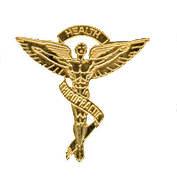 Pain in the shoulder inevitably comes from the soft tissues that are damaged. These tissues are mainly ligaments, cartilage, muscle, tendons and connective tissues; occasionally from nerves, lymph nodes, blood vessels and bone. So when the correct tissues are identified the solution becomes much clearer.
Pain in the shoulder inevitably comes from the soft tissues that are damaged. These tissues are mainly ligaments, cartilage, muscle, tendons and connective tissues; occasionally from nerves, lymph nodes, blood vessels and bone. So when the correct tissues are identified the solution becomes much clearer.
Naturally, the body initiates a full healing process, but often enough the healing is incomplete, leaving scar tissues and weakened structures that cause instabilities of the ligaments and tendons, as seen with Rotator Cuff syndrome, which if left uncared for can lead to sub-acromial bursitis, then to a frozen shoulder. Over time the continued restricted use of the shoulder leads to adhesive capsulitis and eventually degenerative joint disease; sometimes with radiating pains up the neck and down the arm, to the wrist and hand.
Looking at the different tissues they are injured or irritated by several things:
– Ligament pain is caused by excessive stretching and tearing of the partly elastic fibers due to acute trauma (accidents, injuries) or due to positional stress of the arm and shoulder while awake or asleep.
– Cartilage pain is caused by inflammation and degenerative changes within the joint.
– Muscle pain is caused by overuse that makes the muscle fibers tear or become inflamed; or under use which causes fibrosis and hardening of the muscles.
– Tendons become painful for the same reasons ligaments hurt.
– Connective tissues can be overstretched by mechanical forces or by pockets of swelling due to inflammation leading to trigger points.
– Nerves become swollen and inflamed due to constraining pressure from all affected soft tissues of the shoulder, where the pain can follow the length of the arm or up into the head.
Fortunately a person can have their shoulder checked by a Doctor of Chiropractic if there is a lot of pain but even better before the pain becomes intolerable. Unfortunately, too many people know little to nothing about chiropractic and over time they see their shoulder problems become increasingly more complicated. Time is not your friend in situations like this.
What will it take to resolve a shoulder condition? Mild problems can improve with proper use of ice, heat and passive therapy as in ultrasound and electrical muscle stimulation, with modification of activities and only light exercises. Moderate problems require a combination of active and passive exercises but often have a nerve component slowing or preventing the healing due to underlying neck problems affecting the nerves of the shoulder. Severe conditions may require surgery or fixed bracing followed by rehabilitative therapy. Makes a good argument to have it looked at earlier than putting it off.
Yours in Health,
docMIKE

 Follow
Follow
No Comments